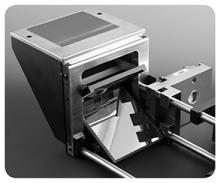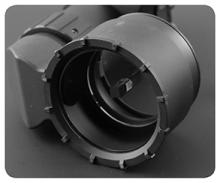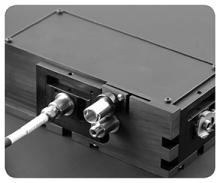Case Studies - Design & Engineering
Optical Sensor Development for Medical Process Monitoring
The Customer – A large international medical device corporation developing a line of new generation blood processing systems.
The Challenge – Current optical sensor technologies utilized in the system were outdated and significantly limited the mechanical design options resulting in poor process control and high instrument costs. A new optical sensing solution was needed that would fit within the streamlined mechanical package.
The Solution – The Promet optical engineering team worked closely with the customer engineering team to carefully characterize the current process control systems and derive a detailed set of optical requirements to drive the development process. Following a round of brainstorming and feasibility studies, PROMET developed a novel, optically-based sensor solution that provides significantly more accurate and useful data while providing greater flexibility in mechanical integration and system operation. As a result the customer was able to utilize a more simple and reliable mechanical design approach thus reducing the overall cost of the system while improving process efficiency. A patent was filed on the new optical sensor design (pending).
Optical Fingerprint Scanner

The Customer – A leading security and biometrics company developing a new line of FBI certified optical fingerprint scanner systems.
The Challenge – Strict FBI fingerprint quality standards required the development of custom camera sensors and illumination and imaging optics to address numerous challenges associated with print latency, distortion, contrast and spatial resolution.
The Solution – The Promet design team worked with the customer to develop several generations of “optical deck” assemblies that were integrated into stand-alone fingerprint scanner stations manufactured by the customer. Multiple systems were developed including portable single-finger modules, four-finger scanners and full palm scanners. Promet also designed novel slap prism illumination schemes which eliminated problematic print latency issues. This new design was successfully patented by the customer and addressed a well-known issue in the biometrics industry. The optical deck designs were successfully transferred into production and manufactured in high-volumes for several years.
Night Vision Display Retrofit

The Customer – Large defense contractor working on a DoD funded project
The Problem – Customer was developing a “Head-Up” symbology display unit to upgrade legacy night vision equipment on rotary winged aircraft. The upgrade required complex reimaging optics to project the digital symbology display into the field of view of the user.
The Solution – Promet worked with the customer and outside consultants to develop a proposed optical design into functional hardware capable of interfacing with existing equipment optics. Following the prototype phase a final version of the display module successfully passed demanding MIL testing and qualification programs and was adopted as a standard product by the customer. The optical module has been in production for 8+ years.
Laser Conditioning Module for Surgical Applications

The Customer – A leading medical device company developing a complex surgical instrument based on a laser ablation process.
The Problem – Customer was experiencing unpredictable power fluctuations, signal monitor outputs and other optical performance issues related to a central Laser Conditioning Module.
The Solution – Promet optical engineering team worked with the customer to first develop a detailed optical model of the Laser Conditioning Module. Using advanced optical simulation software, the Promet team identified possible design issues ranging from optical surface quality problems to stray light effects, thermal expansion issues and coherent laser interference effects. After optimizing the optical layout a new optomechanical design was completed incorporating the required alignment and thermal compensation provisions. A series of prototype modules were built to validate and debug the new optical design and to support the development of the rest of the surgical system. All major issues related to the optical module were resolved and the customer successfully completed early stage medical trials. The system is currently in pre-production awaiting final FDA approval and expected to enter full production within a year.
